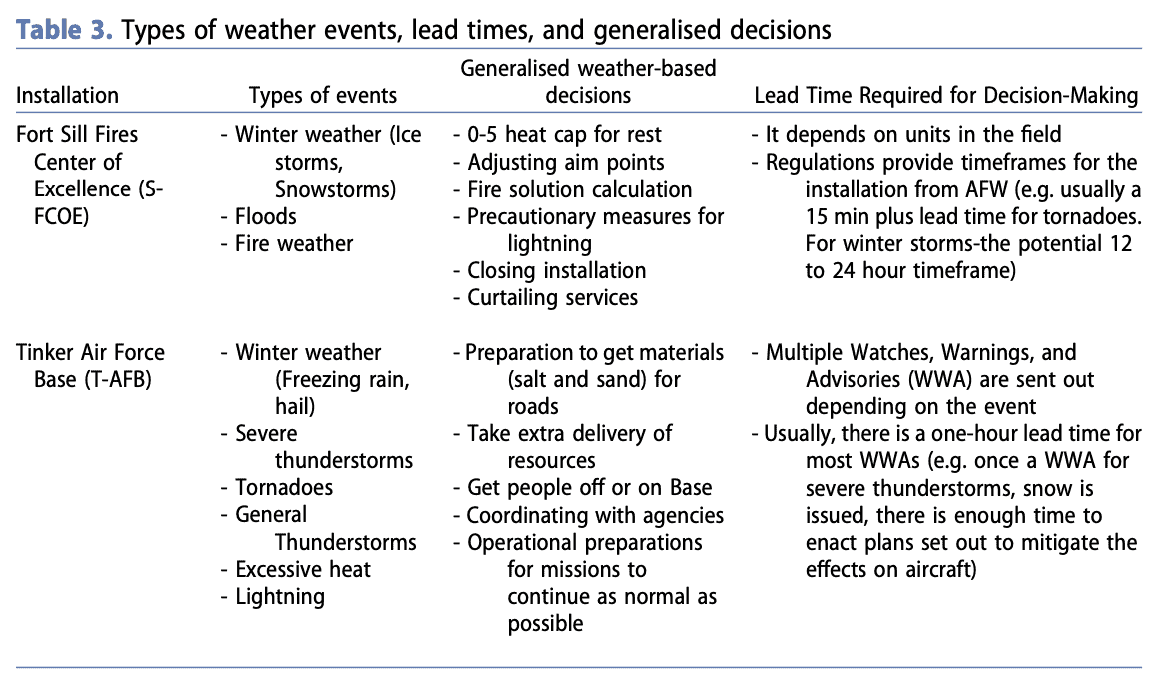
Drs. Dolly Na-Yemeh, Mark Shafer, and Cassandra Shivers-Williams recently published their article, “U.S. military installations and extreme weather: an Oklahoma case study on preparation,” in Environmental Hazards. The paper explores how military installations prepare for extreme weather. Participants in the case study, which was conducted via interviews and a focus group with emergency managers from the installations, included personnel from Tinker Air Force Base and Fort Sill Fires Center of Excellence.
Results showed Air Force Weather products were the primary source of weather information consulted at both installations while the specific variables used and decisions made varied by threat, activity impacted, and resources needed. Furthermore, short- and long-term preparedness were considered at both installations, although their execution differed based on the needs of the unit or task.
With climate change increasing the frequency of extreme weather, these installations will need to become more resilient. The paper emphasizes increased collaboration between military installations and researchers as one potential avenue for increasing such resiliency and encourages future research in other regions.
The investigation of how Oklahoma military installations were using weather and climate information originated out of discussions during a workshop hosted by the Southern Climate Impacts Planning Program (SCIPP) in 2018. The workshop included all five federal military installations and the Oklahoma National Guard. Follow-on funding from NOAA’s Climate Program Office, through the NOAA Cooperative Institute for Severe and High-Impact Weather Research and Operations (CIWRO), allowed for a more in-depth exploration of topics that arose from the meeting, including examining the weather and climate-related needs of Oklahoma’s largest military installations, as detailed in the paper. In a related effort, SCIPP undertook a study to assess the state of knowledge regarding the prediction of wildfires and winter storms and the sources of predictability that could help the National Guard anticipate potential deployment and training needs.
Access the paper here, or click the button below.
